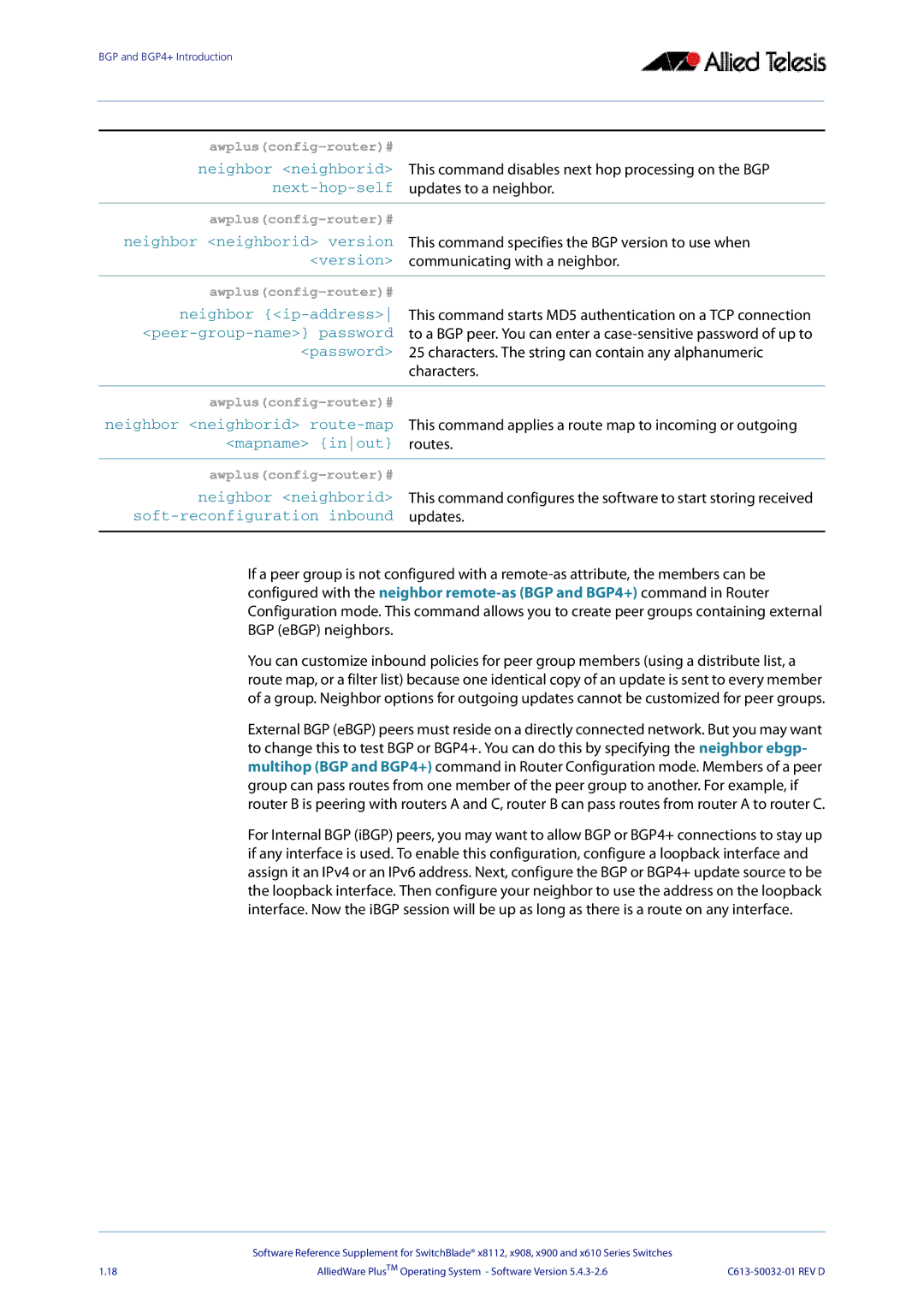
BGP and BGP4+ Introduction
awplus(config-router)#
neighbor <neighborid> This command disables next hop processing on the BGP
awplus(config-router)#
neighbor <neighborid> version This command specifies the BGP version to use when <version> communicating with a neighbor.
awplus(config-router)#
neighbor
<password> 25 characters. The string can contain any alphanumeric characters.
awplus(config-router)#
neighbor <neighborid>
awplus(config-router)#
neighbor <neighborid> This command configures the software to start storing received
If a peer group is not configured with a
You can customize inbound policies for peer group members (using a distribute list, a route map, or a filter list) because one identical copy of an update is sent to every member of a group. Neighbor options for outgoing updates cannot be customized for peer groups.
External BGP (eBGP) peers must reside on a directly connected network. But you may want to change this to test BGP or BGP4+. You can do this by specifying the neighbor ebgp- multihop (BGP and BGP4+) command in Router Configuration mode. Members of a peer group can pass routes from one member of the peer group to another. For example, if router B is peering with routers A and C, router B can pass routes from router A to router C.
For Internal BGP (iBGP) peers, you may want to allow BGP or BGP4+ connections to stay up if any interface is used. To enable this configuration, configure a loopback interface and assign it an IPv4 or an IPv6 address. Next, configure the BGP or BGP4+ update source to be the loopback interface. Then configure your neighbor to use the address on the loopback interface. Now the iBGP session will be up as long as there is a route on any interface.
| Software Reference Supplement for SwitchBlade® x8112, x908, x900 and x610 Series Switches |
|
1.18 | AlliedWare PlusTM Operating System - Software Version |
